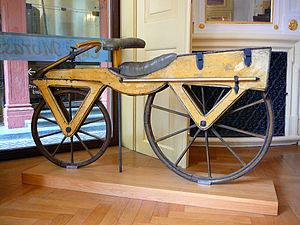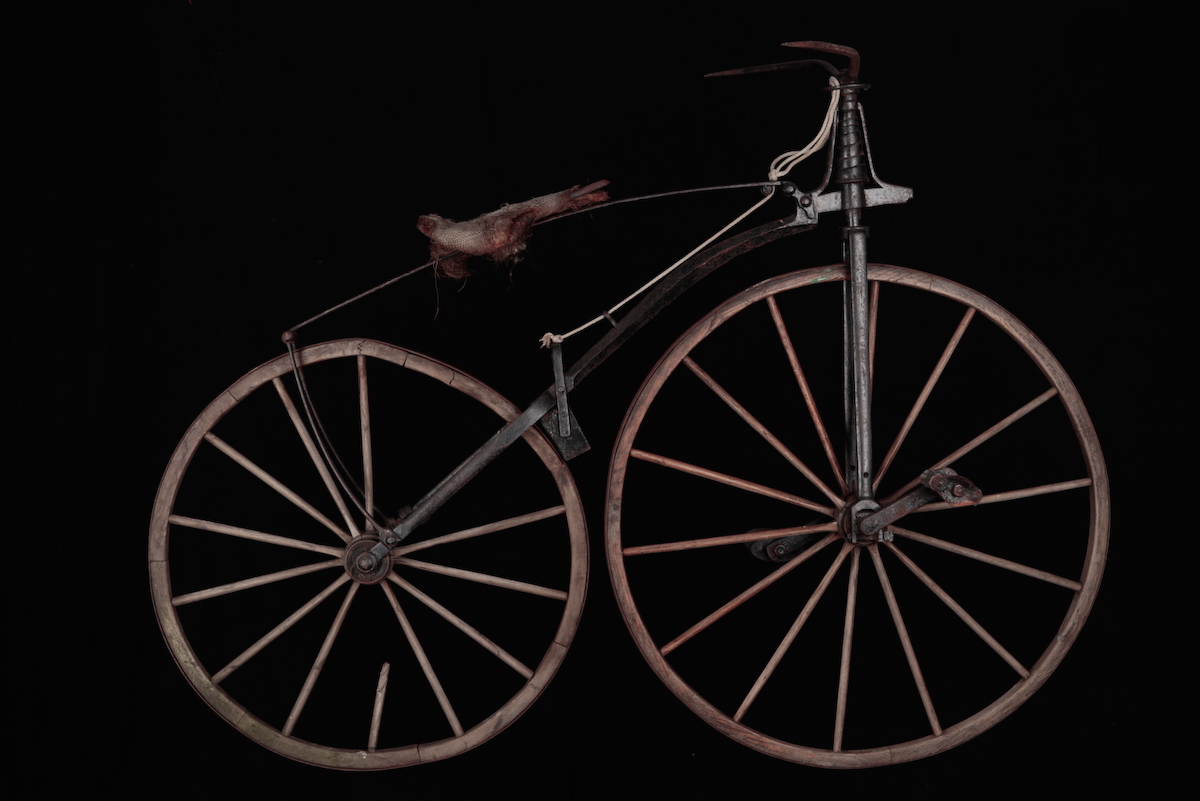
What you see above is a precursor to the modern bicycle, the Draisine. Upon first look, this vehicle is a bicycle, only lacking a chaindrive and pedals. The Draisine was propelled by running, and enjoyed some popularity after Napoleon's defeat. Then it faded to obscurity, with true bikes emerging in 1860.
While the chaindrive solution seems obvious to us, in 1820 it was unknown that a two inline wheel configuration was stable, and the design relied on its users feet to remain balanced. Some people noticed that you could keep your feet off the ground at high speeds while descending a hill, but it was believed to be something that required expertise to accomplish.
What if an inventive draisine driver realised that balance was possible as long as it kept moving, and devised some sort of drive to keep it moving? What if, by 1821, a pedal propelled draisine was invented, marketed by 1823, and became more than just a fad?
How would history change with an earlier introduction of human powered vehicles?
Of course, pneumatic tyres won't be available for some time, and the design should evolve along the lines of OTL bikes.
